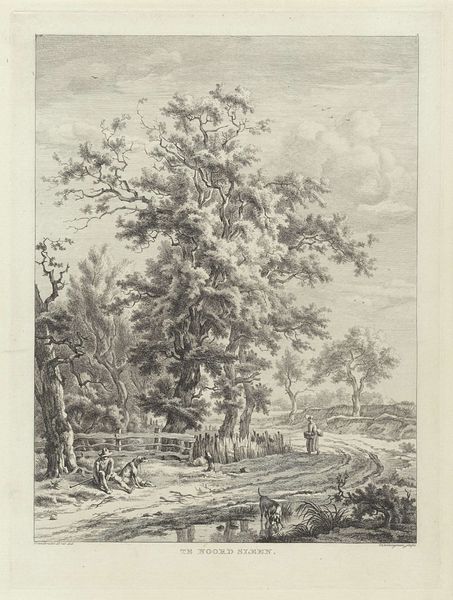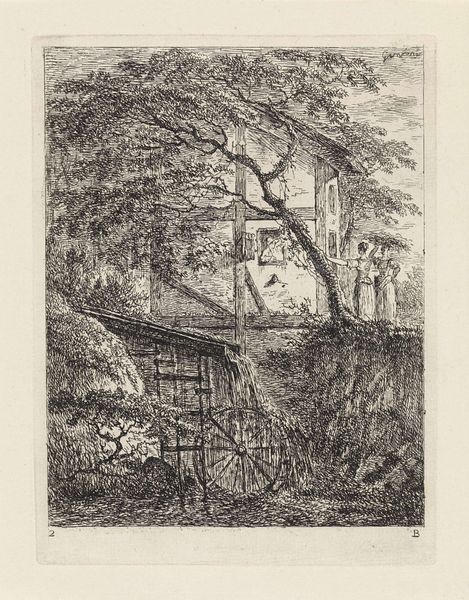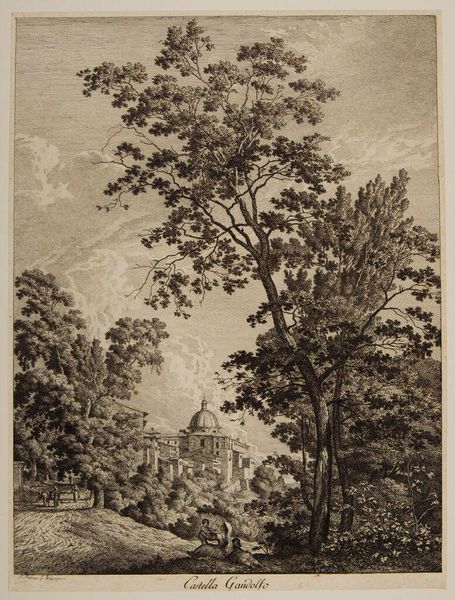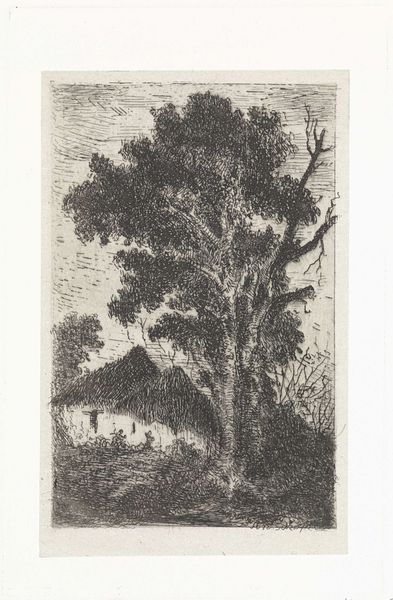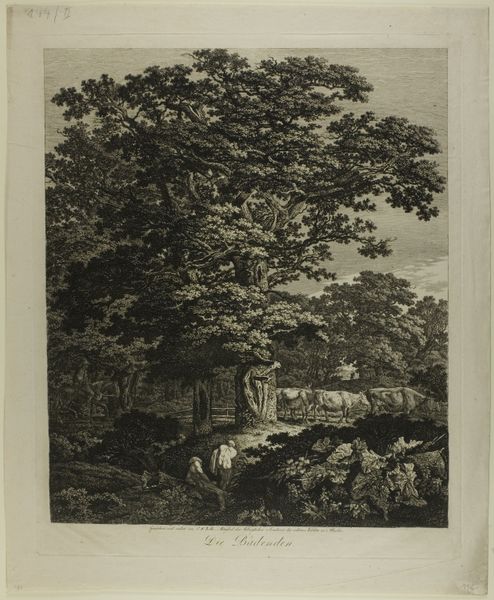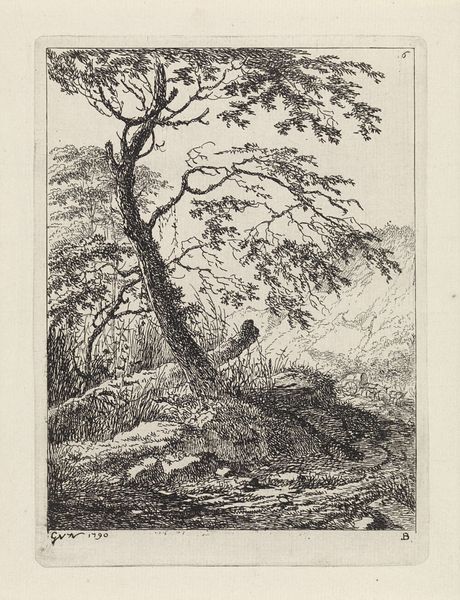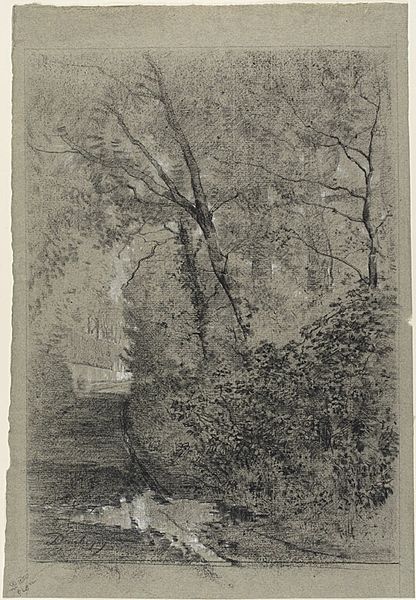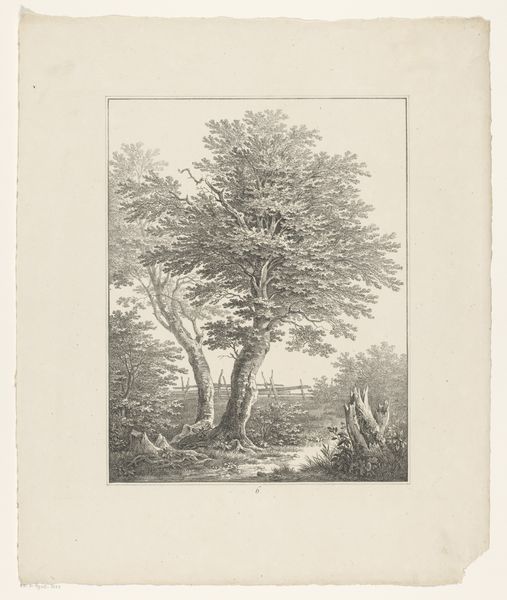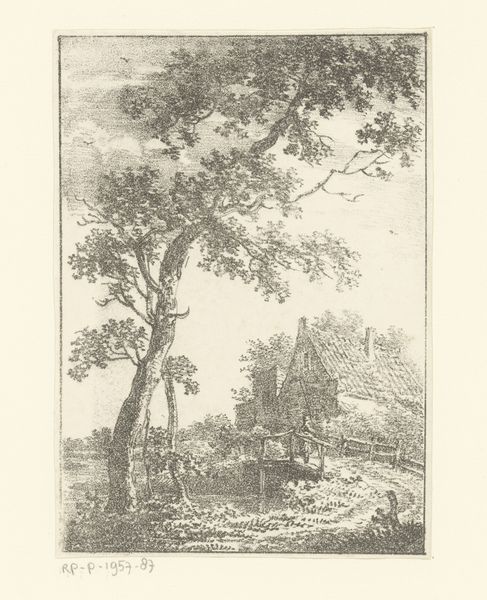
print, engraving
# print
#
old engraving style
#
landscape
#
personal sketchbook
#
romanticism
#
engraving
#
realism
Dimensions: height 149 mm, width 94 mm
Copyright: Rijks Museum: Open Domain
This print of an old mulberry tree in Goes was created in 1837 by an anonymous artist, using a technique that would have been quite common at the time. Look closely, and you’ll see that the image isn’t made of continuous tones, but rather an accumulation of tiny marks. This suggests it was likely made using etching or engraving – processes that demand considerable skill, applying ink to a plate, and then transferring this to paper. The effect is a detailed rendering of the tree’s form and the surrounding landscape, and also carries social and cultural significance. Consider how printmaking democratized images in the 19th century, making them accessible to a wider audience. The labor-intensive nature of etching or engraving contrasts with the mass production it enabled. The artist likely aimed to capture the essence of the tree and its surroundings, but the print also serves as a reminder of the intricate processes behind image-making, and its impact on society. It’s a testimony to the value of craft in a rapidly changing world.
Comments
No comments
Be the first to comment and join the conversation on the ultimate creative platform.


